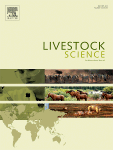View Item
- xmlui.general.dspace_homeCentros e Institutos de InvestigaciónCIAP. Centro de Investigaciones AgropecuariasInstituto de Patología VegetalArtículos científicosxmlui.ArtifactBrowser.ItemViewer.trail
- DSpace Home
- Centros e Institutos de Investigación
- CIAP. Centro de Investigaciones Agropecuarias
- Instituto de Patología Vegetal
- Artículos científicos
- View Item
Quantifying the negative impact of clinical diseases on productive and reproductive performance of dairy cows in central Argentina
Abstract
In dairy herds, cattle experience different health disorders, and their occurrence during lactation may cause important economic losses. The systematic analysis of productive and health records allows us to identify the risk factors of greatest negative incidence on profitability in commercial dairy farms. The aim of this work was to estimate the effects of clinical diseases on the productive and reproductive performance of dairy cattle. A total of 15,423
[ver mas...]
In dairy herds, cattle experience different health disorders, and their occurrence during lactation may cause important economic losses. The systematic analysis of productive and health records allows us to identify the risk factors of greatest negative incidence on profitability in commercial dairy farms. The aim of this work was to estimate the effects of clinical diseases on the productive and reproductive performance of dairy cattle. A total of 15,423 lactations (≥3rd lactations) were analyzed; data involved records of three years obtained from 21 commercial dairy farms randomly selected from the main milk-producing provinces in Argentina. Lactations were classified as “with” (WD) or “without” (WOD) clinical diseases. The parameters production at peak (Ppeak) and 305-d cumulative milk production (305DY) were estimated and lactation curves were fitted using the MilkBot model. Statistical differences were found between lactations with at least one clinical disease (305DY 9,861.3 kg; Ppeak 39.5 kg/d) and those WOD (305DY 10,013.6 kg; Ppeak 40.2 kg/d). The reproductive indicators days open and days to culling were derived from survival analysis. Days open showed that 50% of cows with at least one clinical disease became pregnant 181 days (95% CI = 177; 185) after parturition, whereas in cows without clinical disease, pregnancy occurred on average 126 days (95% CI= 121; 132) after parturition. Furthermore, for days to culling, 50% of the diseased cows exhibited a culling time of 518 days (95%CI = 508; 527), whereas healthy cows remained in the herd for a longer period, on average 563 days (95% CI= 541; 586). The results suggest significant residual effects, i.e. the consequences of clinical disease are not limited to the period of disease progress, but extend to periods after the clinical resolution of the disease.
[Cerrar]

Author
Masia, F.;
Molina, G.;
Vissio, Claudina;
Balzarini, Mónica Graciela;
De la Sota, Rodolfo Luzbel;
Piccardi, Mónica Belén;
Fuente
Livestock Science 259 : 104894 (May 2022)
Date
2022-03-15
Editorial
Elsevier
ISSN
1871-1413
1878-0490 (online)
1878-0490 (online)
Formato
pdf
Tipo de documento
artículo
Palabras Claves
Derechos de acceso
Restringido
 Excepto donde se diga explicitamente, este item se publica bajo la siguiente descripción: Creative Commons Attribution-NonCommercial-ShareAlike 2.5 Unported (CC BY-NC-SA 2.5)
Excepto donde se diga explicitamente, este item se publica bajo la siguiente descripción: Creative Commons Attribution-NonCommercial-ShareAlike 2.5 Unported (CC BY-NC-SA 2.5)

